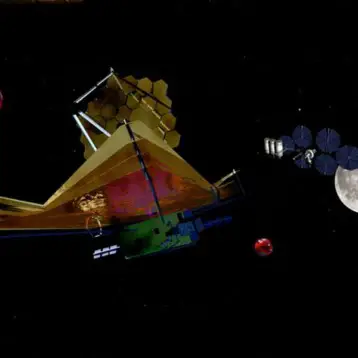|
The spot, discovered by Australian amateur astronomer Anthony Wesley on July 19, was apparently created when a small object – either a meteorite or an asteroid – plunged into Jupiter’s atmosphere and disintegrated. Presently it is about twice the length of the whole of Europe. The only other time in history such a feature has been seen on Jupiter’s surface was 15 years ago. Now, there is an opportunity to further investigate the spot’s origins.
Since Hubble is currently under maintenance and is subject to checkout and calibration, works had to be interrupted in order to focus on the expanding spot, occurring 580 million kilometers away. Matt Mountain, director of the Space Telescope Science Institute in Baltimore, Maryland, allocated discretionary time to a team of astronomers led by Heidi Hammel of the Space Science Institute in Boulder, Colorado.
The picture, taken on 23 July, is the sharpest visible-light picture taken of the feature and is Hubble’s first science observation following its repair and upgrade in May. Observations were taken with Hubble’s new camera, the Wide Field Camera 3 (WFC3), which offers “truly exquisite imaging capability” and has revealed an “astonishing wealth of detail”, according to Ed Weiler, associate administrator of NASA’s Science Mission Directorate.
These announcements are impressive: although the WFC3 was installed back in May, it is not yet fully calibrated. Therefore, the camera’s full capacity cannot yet be realised. Along with pictures taken with ground-based telescopes, the WFC3 can provide meaningful science images. Using this technique astronomers have managed to create the images describing this latest occurrence.
“By combining these images with our ground-based data at other wavelengths, our Hubble data will allow a comprehensive understanding of exactly what is happening to the impact debris,” explained Weiler. Team member Keith Noll of the Space Telescope Science Institute has elaborated on the importance of a comparative analysis: “This is strikingly similar to the comet Shoemaker Levy 9 that impacted Jupiter in July 1994”, he said. “Since we believe this magnitude of impact is rare, we are very fortunate to see it with Hubble”, added Amy Simon-Miller of NASA’s Goddard Space Flight Center.
Scientists have theorized about the size of the object that crashed into Jupiter. One of the estimations, proposed by Simon-Miller, is that its diameter was at least twice the size of several football fields. Furthermore, the force of the explosion on Jupiter was thousands of times more powerful than the suspected comet or asteroid that exploded over the Tunguska River Valley in Siberia in June 1908. While the exact measures of this event are yet to be calculated, it will undoubtedly contribute significantly to the research of Jupiter.
TFOT has also covered the images of Debris Created from Colliding Galaxies, which can help astronomers understand how galaxies were ‘growing’ in the early universe, and the STS-125 Final Shuttle Mission to Hubble, which took off at 2:01 EDT on May 11 from Kennedy Space Center. Other related TFOT stories include a New Method for Discovering Extrasolar Planets, developed by researchers at the Instituto de Astrofisica de Canarias in Tenerife, and Herschel Telescope’s first images, which were received in June 2009 by the European Space Agency.
For more information about the continuous research of Jupiter’s collision, see Hubble’s website.










